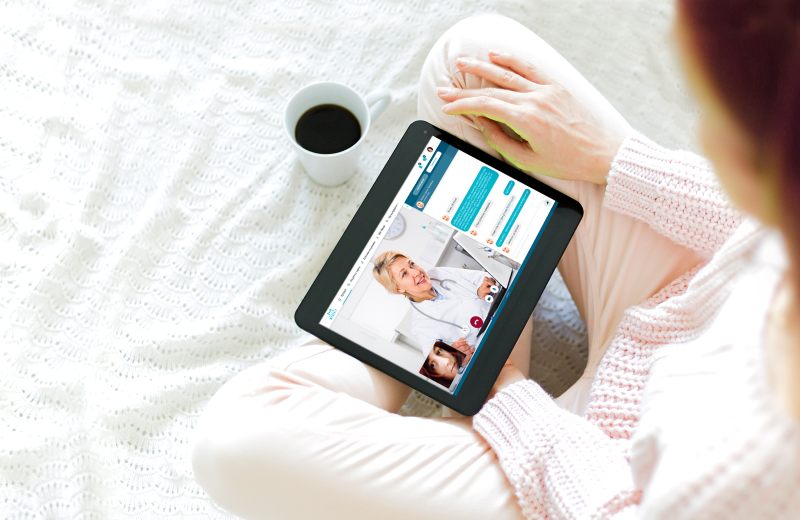Telemedicine Software Development: How to Build a Telemedicine System
The Abto Software team built a full-package telemedicine software that is used today by thousands of patients and keeps growing. The system help’s users to receive medical attention 24/7 from any location inside the country. We know how important today the new approaches to medicine are, and we are happy to share our experience. Let’s find out how to build a telemedicine system.
Content:
3. Telemedicine software features
4. Telemedicine software development challenges
About the project
We met Medikit creators in 2018. They share with us a groundbreaking idea – to build a unique for Ukraine digital healthcare system. It should allow people all over the country to receive quality medical help 24/7.
The Abto Software’s team needed to design and develop full-package telemedicine software. It is supposed to provide interactions between patients and doctors, pharmaceutical and insurance companies, and even medical laboratories.
We decided not to use telemedicine software that already existed on the international market. Every healthcare system in every country has its own rules and needs. So, we chose to build a unique solution from scratch and perfectly adjust it to our client requirements.
After three years of active development, maintenance, and SEO optimization, Abto Software’s team keeps working on the project improvements.
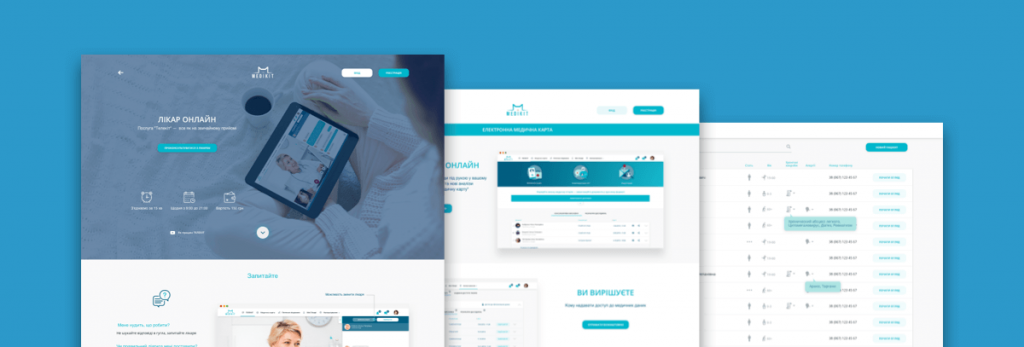
How does telemedicine work
The term “Telemedicine” combines all the digital approaches for communication between doctors and patients without life contact. Communication can be performed via video, audio, or texting.
Telemedicine software is a convenient way to bring qualitative health care to remote locations. It is not afraid of bad roads, long lines at doctor’s offices, and lack of medical professionals. Telemedicine software is especially useful in times of social distancing. The popularity of telemedicine software increased dramatically during the pandemic. For example, in the US, usage of telehealth systems increased by over 120% during February-March of 2020.
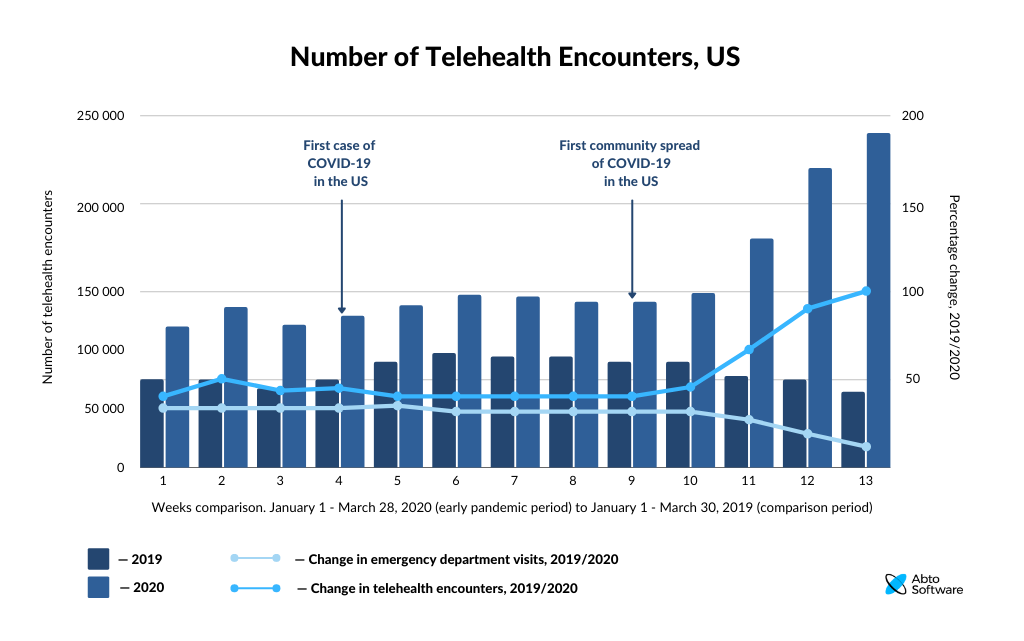
So, how does telemedicine work? It works mostly with the help of telemedicine software. There are several types of it:
- Systems for medical workers. For example, EHR (Electronic Healthcare Records), where doctors can see all the information about their patients without dealing with paper archives.
- Systems for patients. The tools where they can book a medical appointment and choose the type of consultation: offline, video, audio, or text.
- Tools that give patients full access to their health records, results of medical tests, prescriptions, and more.
- Tools for medical institutions. They allow managing patient appointments, life insurances, payments, and more.
In our case with Medikit, we needed to create one telemedicine software that would unite them all. Also, the system should be compatible with the Ukrainian privacy policy as well as with healthcare laws.
Telemedicine software features
There are several features that every telemedicine software requires first of all. They are not dependent on local specifics and project requirements. These features are a critical part of telemedicine software and ensure its proper work.
In our project, we highlighted eight main telemedicine software features:
1. Easy patient registration
The main goal of telemedicine is to simplify communication between patients and medical workers. The process of registration needs to be clear and easy to finish in a few clicks.
2. Convenient EHR
Easy-to-use EHR (Electronic Healthcare Records) systems work for doctors and save time for patient care. No more paper archives. All information about patients including medical history, test results, and prescriptions is in one tool.
3. High level of information protection
Personal information protection should be one of the main focuses during telemedicine software development. The healthcare industry, in fact, one of the most attacked by hackers.
4. Online payment
You need to give patients the ability to pay for medical services in the most convenient way. Here again, you will face localization questions. Choose wisely currencies, payment methods, required financial details, etc.
5. Integrations with the third parties
You can add to the telemedicine software integrations with pharmaceutical and insurance companies, medical laboratories. These integrations reduce paperwork, save time for both parties, and simplify the medical care process.
6. User-friendly interface
Clear and handy UI/UX necessary for any up-to-date web or mobile application. Make your healthcare software user-friendly. It will reduce stress for people who need medical attention as well as for the industry experts.
7. Easy-to-use telemedicine app
It is important to have quick access to necessary documentation for both medical workers and patients. Also, the right telemedicine app will be available for emergency calls, which is quite critical to facilitate virtual care.
8. Video/Audio/Text consultations
It is a good idea to allow patients to choose which format of consultation is better for them, as, commonly, virtual care encompasses multiple interaction options. Audio consultation is the right choice for locations with low access to the internet. Video calls are useful when you need a face-to-face conversation. Text messages are convenient for quick questions and specifications.
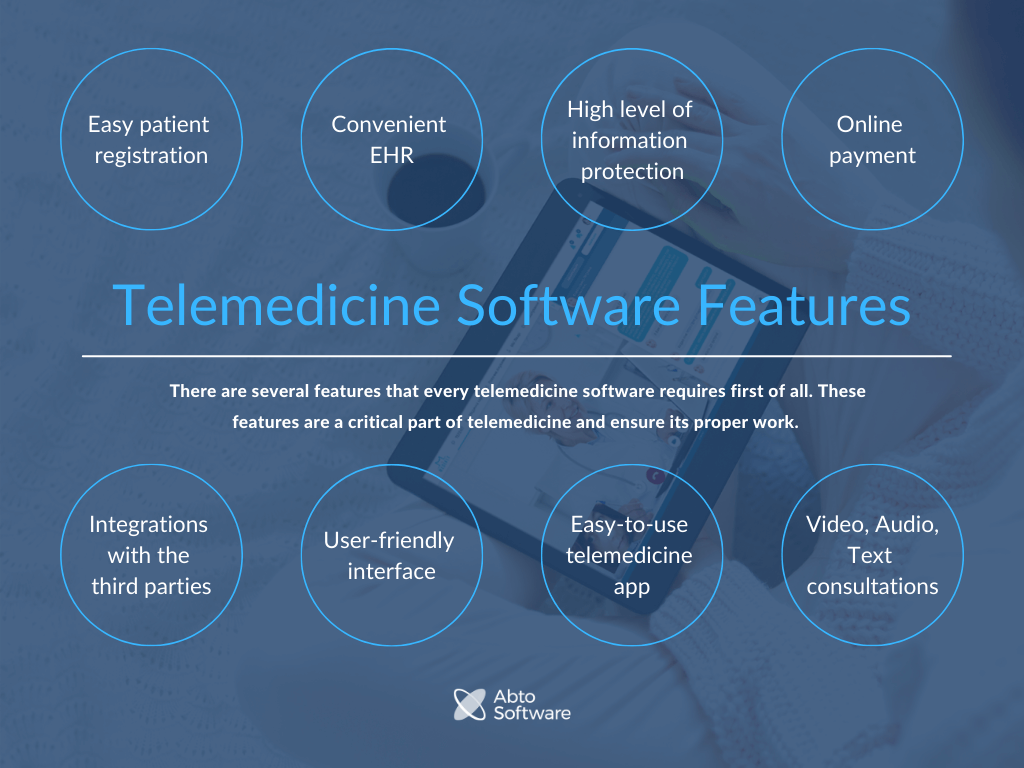
Telemedicine software development challenges
Even with the obvious advantages of this healthcare approach, telemedicine software development has a lot of challenges. Here a few that we faced during our work:
1. Security risks. As we mentioned before, the healthcare industry is one of the most attacked by hackers. Any telehealth system contains a lot of personal information, so make sure it’s protected.
2. Local laws. You need to have a clear understanding of law requirements in your location. For example, in Ukraine, you can store personal medical data only on services located in the country.
3. Healthcare needs. They will change depending on the telemedicine software type, types of medical services, commercial or governmental institutions, and more. Telehealth and telemedicine software features need to be planned and designed before the development stage.
4. Numerous integrations. You need them to cover the needs of all parties involved. So, the software must be flexible, scalable, and, again, well-protected.
Our solution structure
After the discovery stage, we distinguish three main modules of the system. Here are more details.
Module 1. For medical workers
For doctors to leverage virtual care, we developed an EHR (Electronic Healthcare Records) system. Users can enter their working accounts and see patient profiles: their medical history, tests, previous prescriptions, and more.
In this step, software developers shouldn’t forget about clear and intuitive application UI/UX. The database will contain a lot of information and need to be easy to use so it won’t steal time from medical workers.
Doctors can’t consult as soon as they register in the virtual care services system. Firstly, Medikit admins check information about them. When the medical experience is proved, only then doctors will get access to the healthcare system and the right to work with patients.
Also, for the sake of personal information protection, in our telehealth system, the doctor can see data only about patients they work with. Even more, the patient can control the level of access to personal data for every doctor.
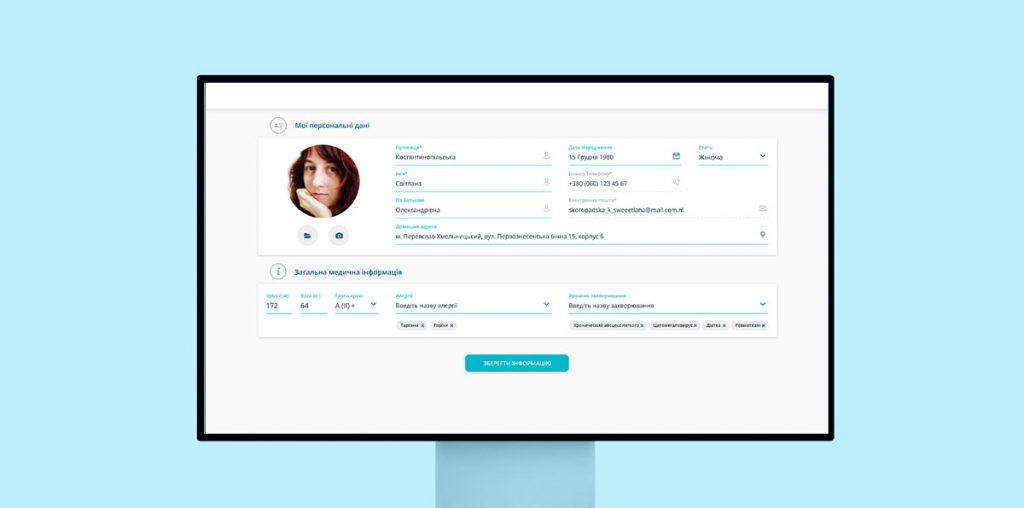
Module 2. For patients
In Medikit, patients have their own accounts in the virtual care services system. There they can control the level of access to their personal data or even delete everything permanently.
We wanted to give patients a reliable tool where they can gather all medical information. You need to share your medical records with another doctor – you are free to do it. Need to see the archive of tests or history of consultations – here they are. You need to make another appointment – it will take less than a minute.
Even more, with the help of additional integrations, Medikit users can book medical tests and order prescripted medicines without leaving the virtual care services system.
To protect the delivered telehealth system from multiple accounts of the same person, we allow registration only via phone number. Firstly, users need to enter their phone number, e-mail, and password. Secondly, they will receive a verification code via SMS. Thirdly, they enter a verification code in the system. Only then users will have access to Medikit.
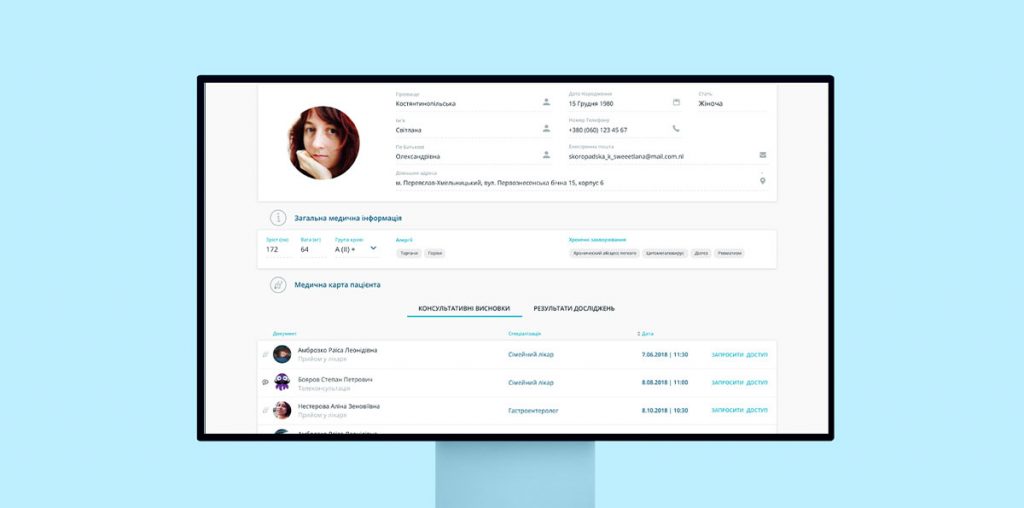
Module 3. For admins
We created a separate module for system admins for management purposes. In admin accounts, users can see statistical data about platform usage, can control additional integrations and see their details. Admins have access to a list of patients’ accounts, but can’t see their personal data. Managers are able to block user accounts or delete them permanently.
Also, we built functionality for managing client subscriptions, payments, and discount systems.
System integrations
Payment system
We used a secure and reliable national Ukrainian payment system UAPAY. An important fact is the telehealth system does not take payment in advance. Firstly, the patient gets their consultation and then receives the bill. If the consultation hasn’t satisfied the patient, they can not pay for it. But in this case, the same person won’t be able to ask the next question or book another appointment.
Medical laboratory
Medikit has an integration with a widely known in Ukraine network of medical laboratories – Synevo. On the one hand, the patients can order medical tests directly in their user accounts. The users can see a complete list of available tests, make their choice, and even get a 10% discount for procedures.
On the other hand, the medical laboratory can upload test results directly on Medikit, where they will be available for patients and doctors. Also, for new clients, who came from Synevo’s side, Medikit gives a free first consultation.
Pharmaceutical company
Our team integrated a pharmaceutical company Liki24 into the telemedicine software. Now users can order and buy prescripted medicines in their Midikit account. They do not need to go to a Pharmacy, wait in line, and after that proof the prescription. Just order in a few clicks and choose the convenient type of delivery.
This integration not only simplifies the lives of patients but also helps to expand the audience for Medikit.
Insurance companies
In our telemedicine software, we decided to build a separate module for insurance companies. They can log in to accounts and add information about their clients who already have insurance. The virtual care system will send these people SMS about Medikit capabilities. If they are interested, insurance clients can register on Medikit via a link in SMS and get a free consultation.
Hospitals
It is a good idea to integrate various hospitals into the telemedicine system. In this way, there will never be a lack of medical experts. Also, hospitals can use convenient Medikit software for their patient management.
Also, Medikit can get new clients from hospitals. On the websites of clinics-partners, we put a communication form where patients can ask their questions. When the question is asked, it is transferred to the Medikit page, where unregistered users can get their answers. What’s more, the virtual care system will suggest these users register on the platform and receive a full consultation.
Telemedicine app
As we decided to make our system as flexible as possible, it was necessary to develop a telemedicine software as well. It was designed for patients and has its own level of security.
Telemedicine app benefits:
- Mobility, easy and quick access to medical data;
- Ability to book an appointment anytime and from everywhere;
- Ability to book a call or to make an emergency call;
- Medical history is always with patient’s pocket in case of emergencies;
- Medical data available even without table access to the internet;
- Personal data protection on API level.
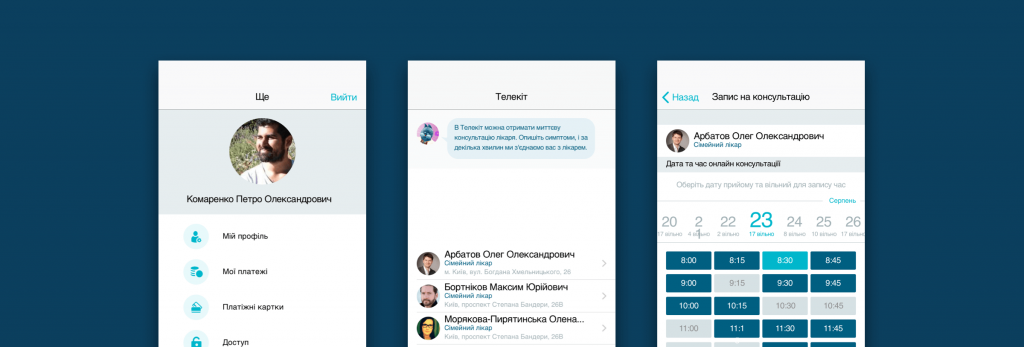
Summing up
In the time of the pandemic, we realize how important it is to develop new approaches to the healthcare system. Our work with Ukrainian startup Medikit proved that online medical services will only grow in popularity.
During the COVID-19 lockdown, traffic to Medikit became almost nine times higher. Even more, in his book “Physics of the Future” theoretical physicist Michio Kaku predicted that telemedicine software is the foreseeable future of the entire healthcare industry.
In building telehealth software, we suggest paying attention to security, clear UI/UX, numerous integrations, and, of course, compliance with local laws. Also, for specific healthcare requests we would recommend building custom solutions or professional customization of existing ones.
If you have a telemedicine or any other healthcare project in mind – contact us. Our development team will be happy to use their experience in creating new outstanding medical solutions.
How you can empower your business: Home-based rehabilitation is on the rise
In the modern age, more and more strategic healthcare organizations are replacing traditional approaches. Various factors, in particular COVID-19 consequences, are pushing healthcare companies towards adopting advanced technology across domains.
One segment now sees great opportunities – physical therapy and rehabilitation.
By implementing AI supported pose detection and analysis, medical professionals might reimagine:
- Digital therapeutics
- Digital rehabilitation
- Elderly care
- Sports medicine & orthopedics
- Prosthetic design and fitting
- Surgical planning
And other related segments of the healthcare industry.
With today’s computational technology, medical professionals efficiently minimize manual routines such as:
- Patient registration and check-in
- Appointment scheduling and reminders
- Data entry and processing
- Medical billing and coding
- Claim processing
- Insurance verification, and more
So why don’t utilize CV empowered pose estimation and analysis to improve patient recovery?
